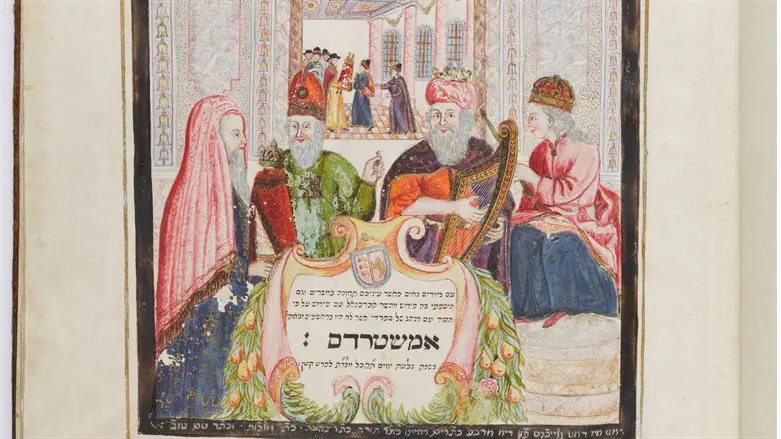
The mysterious order of the Pesach Seder and the diversity of the various parts of the evening, as well as the actions we are directed to take that are included in the Haggadah, have all fascinated commentators as well as everyday Jews for centuries.
Here are two questions that are worth asking the attendees gathered around your table this year; they should promote thoughtful discussion and debate.
Question One: How many plagues were there?
Immediately after the stage in the Haggadah when the Ten Plagues are named comes the part where we find Rabbi Yossi the Galilean initiating the very strange topic of the number of plagues that the ancient Egyptians were punished with.
This part of the Haggadah immediately precedes the section where the joyous song Dayenu is found. The three quoted rabbis in this portion in the Haggadah lived over 1,800 years ago.
Rabbi Yossi explains that there were actually 60 plagues. Rabbi Eliezer is then quoted for his take on this that there were 240 plagues. Finally, Rabbi Akiva differs with his fellow rabbis and takes the view that there were 300 plagues.
What is going on here? It is made plain in the Torah that there are Ten Plagues. Why did this debate take place at all? What's more, why was this strange discussion thought to be important enough to be included at all in the Haggadah? Doesn't this whole topic seem extraneous?
One way to understand all of this is with a little math. First count these three punishments "Blood, and fire, and pillars of smoke," then add the the Ten Plagues, and also include the 600 plagues as given by the three rabbis for a total of 613 plagues.
In Jewish tradition 613 is the number of mitzvot / commandments given to the Jewish People. Classic Torah commentators have long explained that there is a correlation between the Ten Commandments and the Ten Plagues. With that idea in mind the reason that there are 613 plagues present in the Haggadah is a sign to the Jewish People that if we observe the 613 commandments then G-d will have cause to punish our enemies with 613 plagues.
Another thought: The three rabbis were each seeking to calculate the highest number of plagues that they could in order to illustrate G-d's love for the Jewish People due to their view that each plague inflicted upon the Egyptians was punishment and revenge for the horrific torture during our enslavement as well as the slaughter of newborn Jewish boys.
Question Two: Why is the "Next Year in Jerusalem!" song recited as the seder is concluded?
The final formal part of the Haggadah is Nirtzah. Unfortunately, because of the lateness of the hour and anticipation of singing of L'Shana Haba'ah B'Yerushalayim many seder participants may read the text before the song in too quick of a manner to allow the words to illuminate the meaning of the song that is about to be recited.
Here's a rough translation of a key section of the text we say before the song: "As we have been privileged to celebrate this seder, so may we one day celebrate it in Jerusalem. Pure One who dwells in the high places, support your People. May You soon redeem all your People to Zion in joy."
The climax of the Exodus story is the construction of the Holy Temple in Jerusalem. We even sing of this in Dayenu: "If He had brought us into the land of Israel, and had not built for us the Beit Habechirah (Chosen House; the Beit Hamikdash) Dayenu, it would have sufficed us!"
Throughout the Haggadah we are implored to remember the central importance of Holy Temple in the Passover story and in Judaism including in this key part of the seder "Thus did Hillel do at the time of the Beit HaMikdash: He would combine Passover — lamb, Matzah and Maror and eat them together..."
That the nexus of the City of Jerusalem, the Holy Temple, and the Kingdom of Israel in Judaism should never be forgotten is a goal of the anonymous authors of the Haggadah and they wrote this explicitly: "Have mercy, L-rd, our G-d, upon Israel Your people, upon Jerusalem Your city, upon Zion the abode of Your glory, upon the kingship of the house of David Your anointed, and upon the great and holy House which is called by Your Name."
But "Next Year in Jerusalem!" is far from simply a plea for the Messiah to arrive nor could it be a prayer for the Jewish People to return to Jerusalem to live: after all, the entirety of the Jewish People never made their homes in Jerusalem.
What "Next Year in Jerusalem!" is about is a demand that next year our seders be in Jerusalem with a rebuilt Holy Temple so that lambs will be sacrificed there and eaten by all of us at our seders just as we are commanded to in the Torah.
Just in case this essential idea of the seder were not clear enough the Adir Hu song is there to reinforce the message in the last moments of the evening:
May He soon rebuild His House
Speedily, speedily and in our days, soon
G-d, rebuild! G-d, rebuild!
Rebuild your House soon!
Wishing you a joyful and a meaningful Passover.
Moshe Phillips is a commentator on Jewish affairs. He was a U.S. delegate to the 38th World Zionist Congress in 2020. The views expressed are his own.